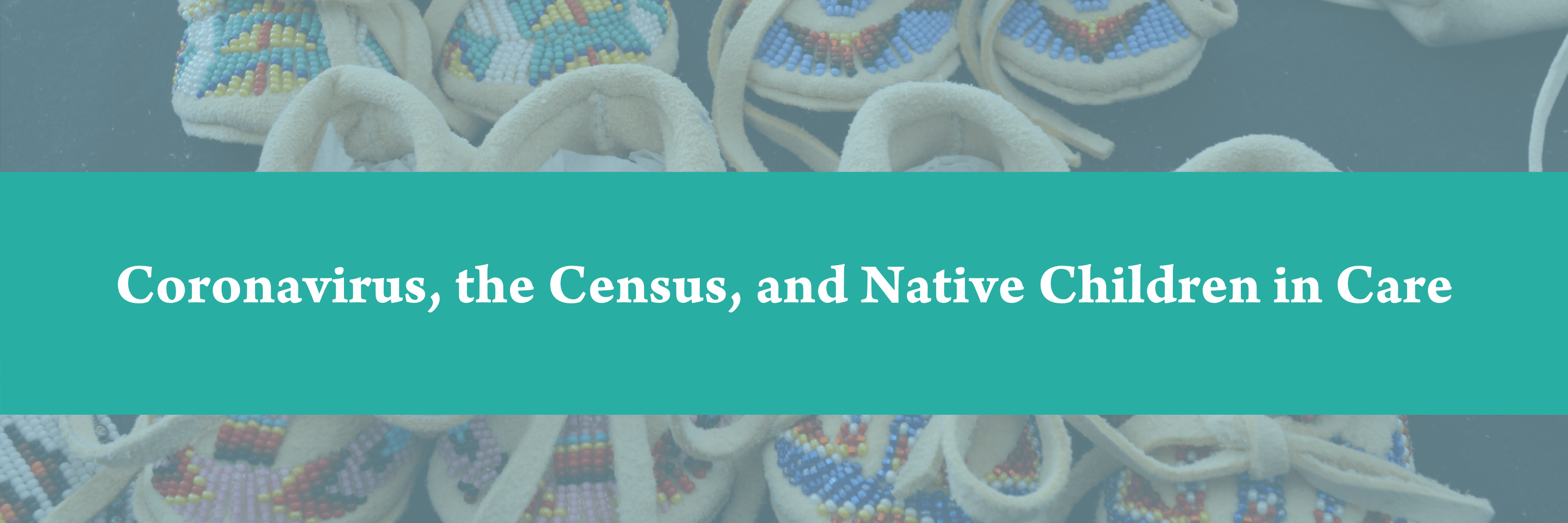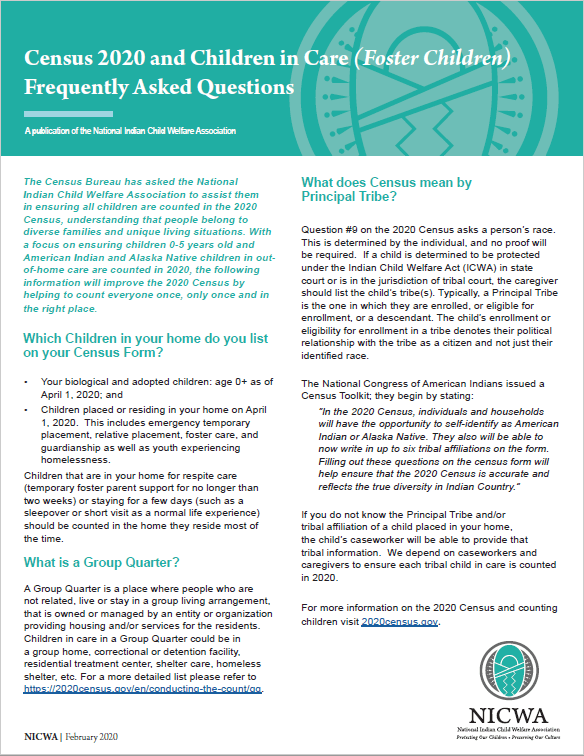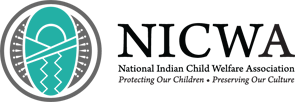
Even before the COVID-19 pandemic, tribal human services were stretched thin and significantly under-resourced. Human service programs in tribal communities are on the frontlines providing care and protection to vulnerable children, adults, and families. In this time of uncertainty and anxiety, there are many questions about how to best support both the long- and short-term needs of Native children in care. While the list of resources below may be useful to you now, ensuring that there is an accurate Census count of Native children in out-of-home care is also important for the long-term health of children, families, and communities for generations to come.
Find NICWA’s COVID-19 resources here.
Completing the Census for Foster Children during the Coronavirus Pandemic
American Indians and Alaska Natives are one of the most undercounted groups of any population in the United States. Native babies, toddlers, children, and youth in out-of-home care, like foster care or residential care, are at even higher risks of being undercounted.
The following information will improve the 2020 Census by helping to count children 0-5 years old and American Indian and Alaska Native children in out-of-home care.
Which Children Should be Listed in Each Home on the Census?
Most households received their invitation to respond to the 2020 Census between March 12 – 20. Remember to count everyone who is living at your address, including:
- Biological and adopted children: age 0+ as of April 1, 2020; and
- Children placed or residing in your home on April 1, 2020. This includes emergency temporary placement, relative placement, foster care, and guardianship as well as youth experiencing homelessness.
Children that are in your home for respite care (temporary foster parent support for no longer than two weeks) or staying for a few days (such as a sleepover or short visit as a normal life experience) should be counted in the home they reside most of the time.
What is a Group Quarter?
A Group Quarter is a place where people who are not related, live or stay in a group living arrangement, that is owned or managed by an entity or organization
providing housing and/or services for the residents. Children in care in a Group Quarter could be in a group home, correctional or detention facility, residential treatment center, shelter care, homeless shelter, etc. For a more detailed list please refer to https://2020census.gov/en/conducting-the-count/gq.
What is a Principal Tribe?
Question #9 on the 2020 Census asks a person’s race. This is determined by the individual, and no proof will be required. If a child is determined to be protected under the Indian Child Welfare Act (ICWA) in state court or is in the jurisdiction of tribal court, the caregiver should list the child’s tribe(s). Typically, a Principal Tribe is the one in which they are enrolled, or eligible for enrollment, or a descendant. The child’s enrollment or eligibility for enrollment in a tribe denotes their political relationship with the tribe as a citizen and not just their identified race.
According to the National Congress of American Indians, “In the 2020 Census, individuals and households will have the opportunity to self-identify as American Indian or Alaska Native. They also will be able to now write in up to six tribal affiliations on the form. Filling out these questions on the census form will help ensure that the 2020 Census is accurate and reflects the true diversity in Indian Country.”
If you do not know the Principal Tribe and/or tribal affiliation of a child placed in your home, the child’s caseworker will be able to provide that tribal information. We depend on caseworkers and caregivers to ensure each tribal child in care is counted in 2020.
You can complete your form online, by phone, or by mail when your invitation to respond arrives. If you have received your form, visit my2020census.gov to begin.
For a PDF version of Census 2020 and Children in Care (Foster Children) Frequently Asked Questions, click here.
For more information on counting children in the 2020 Census, visit 2020census.gov.

